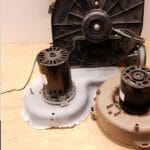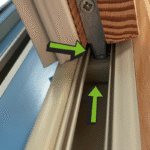Imagine you’re enjoying a peaceful afternoon when suddenly, your swamp cooler starts making a humming noise. This unexpected sound can be both annoying and worrisome.
You might wonder if it’s a sign of a bigger problem or just a minor hiccup. You’re not alone; many homeowners face this issue and seek answers. Understanding the cause of the humming noise is crucial for ensuring your swamp cooler operates smoothly, especially during those hot summer days when you rely on it the most.
Dive into this article to discover why your swamp cooler is making that noise, how it can affect your comfort, and the steps you can take to fix it. Let’s make sure your cooler is back to keeping your home cool and calm, without the unwanted soundtrack.
Common Causes Of Humming Noise
Swamp coolers can sometimes make a humming noise. This sound can be annoying and may indicate a problem. Understanding the common causes helps in fixing the issue quickly. Let’s explore some of the usual suspects behind that humming noise.
Motor Issues
The motor is a vital part of the swamp cooler. If it’s not working properly, it can produce a humming sound. Worn-out bearings or a faulty motor can be the culprit. Regular maintenance can help prevent motor problems.
Fan Blade Problems
Fan blades can also cause a humming noise. They might be bent or unbalanced. This can happen due to debris or wear and tear. Ensuring that blades are in good condition is essential. It can help keep the cooler running smoothly.
Electrical Connections
Loose or faulty electrical connections can lead to humming sounds. This issue needs attention. It can be a sign of a bigger electrical problem. Checking the wiring and connections might solve the issue. It’s important for safety and efficiency.
Inspecting The Motor
A swamp cooler making a humming noise can be concerning. Often, the motor is the culprit. Inspecting the motor is a crucial step. This helps identify the source of the noise. It ensures your cooler runs smoothly. Proper inspection can prevent further damage.
You may not need complex tools. Understanding basic components is key. This guide will focus on essential aspects. Keep your swamp cooler in top condition.
Checking Motor Bearings
Motor bearings can wear down over time. This wear can cause a humming sound. Check for any signs of damage. Look for wear, dirt, or rust. These can indicate faulty bearings. Replacing damaged bearings can stop the noise. It may also improve motor efficiency.
Lubrication Needs
Lubrication is vital for motor health. Lack of lubrication can cause noise. Check if the motor needs oiling. Use the correct lubricant for your motor. This can significantly reduce the humming. Regular lubrication extends motor life.
Motor Replacement
Sometimes, motor replacement is necessary. If the humming persists, consider this option. Motors have a limited lifespan. Consistent noise may indicate the end of its life. Replacing the motor can restore function. It ensures your swamp cooler operates quietly.
Examining Fan Blades
A swamp cooler making a humming noise may indicate an issue with the fan blades. Checking for dirt or misalignment can help. Properly maintained blades ensure efficient cooling and reduce noise.
A swamp cooler humming noise can be an annoyance, but it often hints at an issue with the fan blades. These components are crucial for proper airflow and efficiency. When they falter, your cooler might struggle to perform. Examining the fan blades can save you from future headaches. Let’s dive into the specifics, ensuring your swamp cooler operates smoothly and quietly.Blade Alignment
Proper alignment is key to avoiding unwanted noise. Misaligned blades can cause vibrations, leading to that persistent hum. Check if the blades are evenly spaced and securely attached. You can often spot misalignment by visual inspection. Do the blades look crooked or uneven? If yes, adjust them. Realigning blades can often resolve noise issues without much hassle.Damage Or Wear
Fan blades endure a lot of stress and can wear down over time. Chips, cracks, or bends are common signs of wear. Damaged blades can wobble, which leads to humming. When inspecting, look closely for any physical damage. Have you noticed any changes in performance lately? It might be time to replace worn-out blades. A fresh set can bring back the calm and quiet operation you desire.Balancing Blades
Balanced blades contribute to a smooth-running cooler. Imbalance can cause vibrations, resulting in that annoying hum. To check balance, spin the blades manually and observe their movement. Do they sway or wobble? If so, they need balancing. You can use a balancing kit to fine-tune them. This simple step can significantly reduce noise and improve efficiency. Examining fan blades is not just about fixing a noise; it’s about maintaining the health of your swamp cooler. By addressing alignment, damage, and balance, you ensure quieter operation and extend the life of your cooler. Have you ever tackled a noisy cooler yourself? These tips could be your solution.
Credit: www.tiktok.com
Checking Electrical Components
A humming noise from a swamp cooler might indicate issues with electrical components. Inspect wires and connections for damage or wear. Replacing faulty parts can solve the noise problem, ensuring smoother operation.
When your swamp cooler starts making a humming noise, it’s time to roll up your sleeves and check the electrical components. This isn’t just a task for tech-savvy folks; anyone can do it with a bit of guidance. Ignoring these sounds could mean trouble down the line, so let’s get proactive and ensure your cooler runs smoothly. After all, you want to enjoy a cool breeze, not an annoying hum. Ready to dive in and troubleshoot?Loose Connections
Loose connections might be the culprit behind that persistent hum. Imagine how a loose plug causes flickering lights; your cooler works similarly. Carefully inspect the connectors and ensure each one is tightly secured. Feel a bit intimidated? Don’t worry. A simple screwdriver can help tighten those screws and eliminate the hum.Wiring Inspection
Wires play a crucial role in the electricity flow. Damaged or frayed wires can disrupt this flow and cause noise. Take a close look at the wiring inside your swamp cooler. Are there any visible signs of wear or tear? If you spot any damaged wires, it’s best to replace them. This not only fixes the hum but also prevents potential hazards.Capacitor Functionality
The capacitor is like the heart of your swamp cooler’s electrical system. If it’s not functioning well, it can lead to that annoying hum. How can you check this component? First, turn off the power to avoid any shocks. Then, look for any signs of bulging or leakage in the capacitor. If it’s faulty, replacing it could be your solution to a quieter, more efficient cooler. Do these steps seem straightforward, or do you need a bit more guidance? Tackling these checks can save you from future headaches. And remember, maintaining your swamp cooler not only boosts its performance but also extends its lifespan. So, are you ready to silence that hum for good?Preventive Maintenance Tips
A swamp cooler making a humming noise can be annoying. It often signals maintenance needs. Regular preventive care helps avoid such issues. It keeps your cooler efficient. It also extends its life. Follow these simple tips for a quieter cooler experience.
Regular Cleaning
Dirt and debris can clog your swamp cooler. This leads to unnecessary noise. Clean your cooler regularly to prevent this. Start by turning off the power. Remove the panels carefully. Use a soft brush to remove dust. Wipe surfaces with a damp cloth. Ensure filters are clean and free of dirt. This simple routine reduces noise and enhances performance.
Seasonal Check-ups
Schedule check-ups at the start of each season. Inspect the fan and motor for wear. Check the water pump for any blockages. Ensure the water supply line is clear. Look for leaks and fix them promptly. This helps keep your cooler running smoothly. It also minimizes disruptive noises.
Component Replacement Schedule
Components wear out over time. Replace them as needed to avoid noise issues. Inspect fan belts and pads regularly. Replace worn or damaged parts immediately. Keep a schedule for checking these components. This proactive approach prevents humming noises. It also maintains your cooler’s efficiency.

Credit: www.serviceexperts.com
When To Call A Professional
A persistent humming noise from your swamp cooler could signal a mechanical problem. This issue may require a professional’s expertise. Ignoring the noise might lead to further damage or costly repairs.
When your swamp cooler starts making a humming noise, it can be more than just an annoyance. While some issues are easy to fix, there are times when a professional touch is crucial. Knowing when to call for expert help can save you from further damage and expenses.Persistent Noise Issues
If your swamp cooler continues to hum even after basic troubleshooting, it’s time to seek professional assistance. Persistent noises might indicate underlying issues that require expert diagnosis. Leaving it unchecked could lead to more severe problems or even permanent damage to your cooler.Complex Electrical Repairs
Electrical components are not something to tinker with if you’re not experienced. Complex wiring or faulty switches can pose safety risks. A professional has the know-how and tools to handle these repairs safely and efficiently.Motor Or Blade Replacement
Replacing a motor or fan blade isn’t just a simple swap. It involves understanding the intricacies of your cooler’s design. A professional can ensure the new parts are installed correctly, maximizing efficiency and lifespan. Have you ever tried fixing something, only to make it worse? That’s a common story when it comes to DIY repairs. Professionals not only fix the issue but also offer peace of mind. So, when should you put down the tools and pick up the phone? When the problem is beyond your expertise, don’t hesitate to call a professional.
Credit: www.reddit.com
Frequently Asked Questions
Why Is My Swamp Cooler Making A Humming Noise?
A humming noise often indicates a loose or worn-out motor belt. Check and replace it if needed.
How Can I Fix The Humming Noise In My Cooler?
First, inspect the motor and fan. Tighten any loose parts. Replace worn-out components if necessary.
Is A Humming Noise From A Swamp Cooler Normal?
No, it usually signals an issue. Regular maintenance can help prevent such noises.
Can A Humming Noise Damage My Swamp Cooler?
Yes, if ignored, it might lead to bigger problems. Address the issue promptly to avoid costly repairs.
What Tools Do I Need To Fix A Humming Swamp Cooler?
You might need a screwdriver and wrench. Also, have replacement parts like a motor belt on hand.
Conclusion
A humming noise in your swamp cooler needs attention. Ignoring it could lead to bigger problems. Regular maintenance helps avoid noise issues. Check for loose parts and clean the unit often. Tighten screws and replace worn-out belts. Listen carefully for unusual sounds.
This keeps your cooler running smoothly. Troubleshooting small problems saves money. It also ensures your cooler works efficiently. Enjoy cool air without annoying noises. Keep your home comfortable and peaceful. Fix it soon for a better cooling experience. Don’t let minor issues disrupt your comfort.



